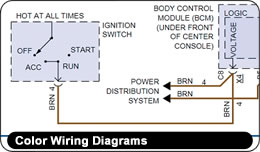

That’s simply because no business can operate for long at this level. Since overhead costs generally have to be paid monthly, you must know your total minimum monthly cost-how much money you need to make just to stay in business. It also must be included in the cost of goods sold on the income statement. In a manufacturing business, generally accepted accounting principles (GAAP) require overhead to be included on your balance sheet as part of inventory. Overhead costs appear on the company’s financial statements, specifically on the income statement where they are deducted from profit. Compliance with financial accounting rulesĬompanies use financial accounting to report externally to shareholders (if your company has them) and tax authorities on the income, expenses, and profitability of the business. Or, you might price them too high, resulting in unsold inventory and a hit to your bottom line. Not knowing your overhead costs could result in you pricing your products too low and not making a profit. You also have to include your overhead costs in your pricing. But it would be a mistake to just look at those costs and add markup. Usually, it’s pretty clear what those are. When you price your products or services, you take into account the cost of inventory or the labor and materials that go into them. It helps you know which products and services are most profitable, and it helps you make better decisions. Understanding your true costs allows your business to control costs and figure out where you may be able to save money. To be totally accurate, some amount of overhead expense has to be allocated to each unit of production. That includes every last component that goes into producing the product, freight, labor hours per unit, etc. Accurate cost accountingĬompanies use cost accounting internally to figure out the true cost of production. Overhead costs and operating expenses should be tracked separately for a number of reasons. You wouldn’t have to buy parts, pay your service delivery people, or advertise, but you’d have to keep making your rent, utility, and insurance payments. How can you tell the difference between an operating cost and business overhead? One way is to think about which bills you’d have to pay even if you stopped making your product or delivering your service for a while. In fact, they are sometimes referred to as fixed costs. Utility bills may vary seasonally and you may have more repairs one month than another, but these business expenses are more or less fixed. Overhead costs don’t vary much with business volume. Overhead expenses are what it costs simply to stay in business-your day-to-day business operations. These include raw materials, parts, labor, and equipment, and can vary according to business activity. Operating expenses are costs that are directly related to the production of a product or delivery of a product or service-and to producing revenue. When conducting business, there are two main types of expenses that small business owners need to track to understand pricing, budgeting, reporting, and profitability.


 0 kommentar(er)
0 kommentar(er)
